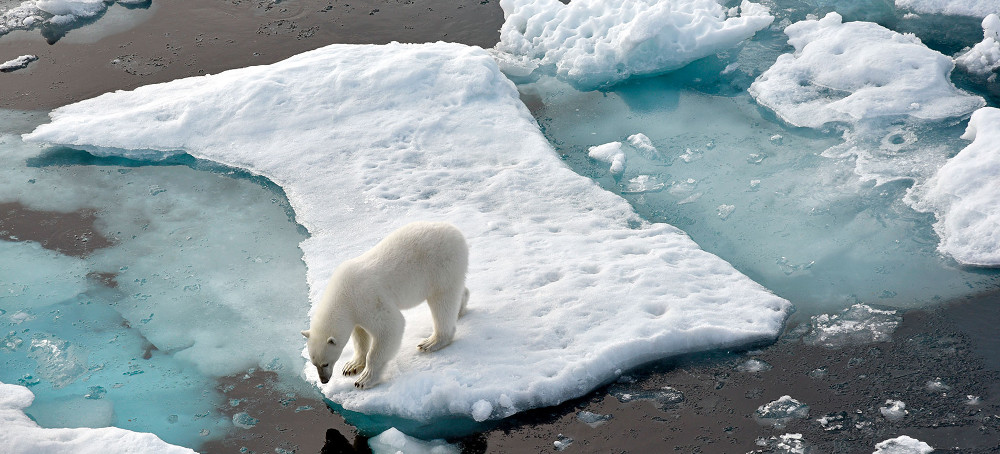Polar Bear Attacks in Wales, Alaska, Highlights Climate Change Link
Ellen Francis and Dino Grandoni The Washington Post Scientists say climate change is forcing the polar bears to spend more time inland than in the past. (photo: Ulf Mauder/Getty)
Scientists say climate change is forcing the polar bears to spend more time inland than in the past. (photo: Ulf Mauder/Getty) Polar Bear Attacks in Wales, Alaska, Highlights Climate Change Link
Ellen Francis and Dino Grandoni The Washington PostPolar bear attacks are exceedingly rare. Between 1870 and 2014, there were only 73 documented attacks by wild polar bears across Canada, Greenland, Norway, Russia, and the United States, resulting in 20 human deaths, according to a 2017 study. Still, the recent mauling has raised questions about whether the impact of global warming heightens the risk of attacks by polar bears, which are powerful predators.
No individual attack can be attributed to climate change, and the U.S. Fish and Wildlife Service says it is still investigating the circumstances of the Alaska attack.
But rising temperatures are melting the sea ice that polar bears navigate to find mates, raise cubs and hunt seals to sustain their high-fat diet. The shrinking ice has put the population of polar bears at risk of decline.
Scientists say climate change is forcing the Arctic carnivore to spend more time inland than in the past — raising the possibility of run-ins that could be dangerous both for humans and bears.
Before last week, the last deadly bear attack in Alaska was in 1990, according to Geoff York, a senior director of conservation at the environmental group Polar Bears International, who co-wrote the 2017 paper. The bear at the time, like others that may attack, showed signs of starvation.
“Animals in poor body condition are just more likely to take risks. They’re more likely to be desperate and to do things that a healthy bear typically wouldn’t do. And those are the bears specifically that people have to be worried about,” York told The Washington Post.
Federal wildlife managers say the loss of ice is “the primary threat to polar bears,” which are listed as threatened under the Endangered Species Act.
“Human-polar bear interactions are expected to increase as polar bears spend more time on shore in more places,” York said.
Researchers have reported seeing an “increased presence” of polar bears on land and in coastal areas, from Alaska, to Baffin Bay near Greenland, to Svalbard, a Norwegian archipelago in the Arctic Ocean north of mainland Europe.
And some communities in proximity to the large creatures have tried to reduce the risks of human-bear encounters, including polar bear patrols in Russia and Canada, for instance.
Earth is now losing 1.2 trillion tons of ice each year.
Jon Aars, who has led the Norwegian Polar Institute’s polar bear program since 2003, notes that Svalbard has “strict rules for how you behave when you’re out,” teaching residents warning systems and requiring they carry weapons if in the field.
The conditions and hunger of polar bear populations varies, according to Aars, who said the bears in Svalbard were “still in quite good shape.” While it’s more dangerous to meet a hungrier or younger bear, they could attack even if well-fed, he added.
The bears, meanwhile, “do the best out of the situation, they look for alternatives when there’s no ice,” Aars said. But, he added: “I think it’s not very likely that they will be able to survive in areas where you have no sea ice at all.”
